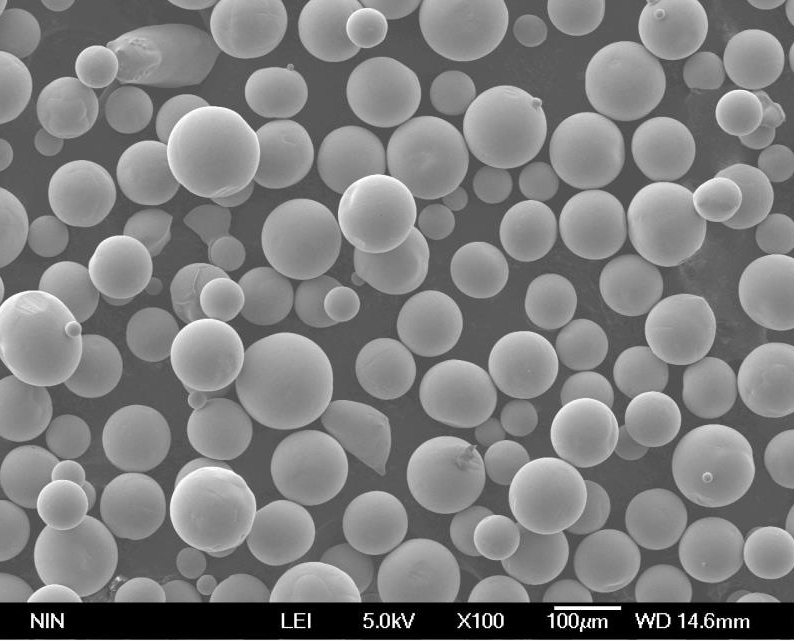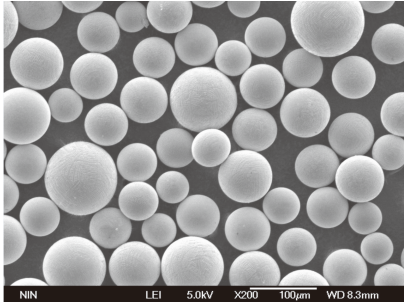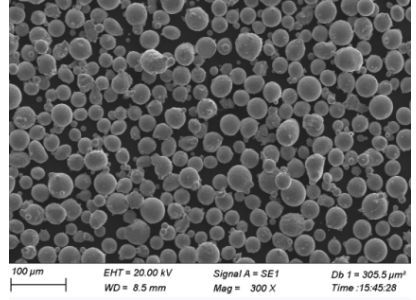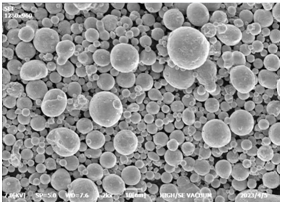CoCrMoW powder—Cobalt-Chromium-Molybdenum-Tungsten alloy powder—has become a highly sought-after material for industries like aerospace, medical implants, and high-performance mechanical systems. This versatile metal powder, with its outstanding mechanical properties and resistance to wear, corrosion, and heat, makes it a crucial element in a range of advanced manufacturing processes like additive manufacturing, metal injection molding, and thermal spray coatings.
But what makes CoCrMoW powder stand out? Why is it such a popular choice in demanding environments? If you’re curious about its properties, applications, and how it compares to other powders, you’ve come to the right place.

Overview of CoCrMoW Powder
CoCrMoW powders belong to a family of superalloys primarily made up of cobalt, chromium, molybdenum, and tungsten, designed to offer exceptional wear resistance, corrosion resistance, and high-temperature strength. These powders are commonly used in critical applications where conventional materials may fall short due to harsh environmental conditions.
In this article, we’ll dive deep into the specific types of CoCrMoW powder, their properties, applications, and the pros and cons of using them in various industries. We’ll also cover the leading suppliers, prices, and technical specifications.
Composition of CoCrMoW Powder
The composition of CoCrMoW powders typically includes a well-balanced mix of cobalt (Co), chromium (Cr), molybdenum (Mo), and tungsten (W), with additional alloying elements like carbon, silicon, and nickel to enhance certain characteristics. The precise composition can vary depending on the specific type of powder, but cobalt forms the base of the alloy.
Below is a breakdown of a typical CoCrMoW powder composition:
| Element | Typical Composition (%) |
|---|---|
| Cobalt (Co) | 55-65% |
| Chromium (Cr) | 25-30% |
| Molybdenum (Mo) | 5-10% |
| Tungsten (W) | 2-5% |
| Carbon (C) | 0.1-0.5% |
| Nickel (Ni) | 0-5% |
Key Alloying Elements and Their Role
- Cobalt (Co): Provides excellent corrosion resistance and maintains the alloy’s strength at high temperatures.
- Chromium (Cr): Improves oxidation resistance and overall durability.
- Molybdenum (Mo): Contributes to wear resistance and increases the alloy’s strength, particularly under stress.
- Tungsten (W): Enhances the alloy’s ability to withstand extreme temperatures without deforming.
Characteristics of CoCrMoW Powder
What makes CoCrMoW powder so unique? Let’s break down its key characteristics:
1. High-Temperature Resistance
Due to the presence of cobalt and tungsten, CoCrMoW powder maintains its structural integrity even in high-temperature environments. This makes it an ideal choice for parts used in jet engines, turbines, and other high-heat applications.
2. Excellent Wear and Corrosion Resistance
Cobalt and chromium provide robust resistance to both wear and corrosion, which is critical for applications in the medical field (e.g., implants), oil & gas, and marine environments.
3. Biocompatibility
CoCrMoW alloys are known for their biocompatibility, making them suitable for medical applications, especially implants like hip joints and dental restorations. They are non-reactive with body tissues and fluids, which minimizes the risk of rejection.
4. Versatility in Manufacturing
CoCrMoW powder is suitable for a variety of manufacturing techniques, including metal injection molding, 3D printing, and traditional casting processes. The powder’s ability to fuse and solidify efficiently during these processes allows for high-precision parts with complex geometries.






Applications of CoCrMoW Powder
Where is CoCrMoW powder most commonly used? Let’s explore its primary applications across different industries.
| Industry | Application | Why CoCrMoW? |
|---|---|---|
| Medical Implants | Hip and knee replacements, dental implants | Biocompatibility, wear resistance, corrosion resistance |
| Aerospace | Jet engine components, turbine blades | High-temperature strength, durability |
| Automotive | High-performance engine parts, gears | Wear resistance, high mechanical strength |
| Oil & Gas | Drilling tools, valve seats, pumps | Corrosion resistance, ability to handle extreme pressures |
| Power Generation | Turbine components, heat exchangers | High-heat resistance, reliability in harsh conditions |
| Marine | Propeller shafts, pump components | Corrosion resistance in saltwater environments |
Top 10 CoCrMoW Powder Models
Let’s get into the details of some specific CoCrMoW powder models available in the market. Each has its own set of unique characteristics tailored for specific applications.
1. Praxair CoCrMoW P231
A high-quality powder designed for thermal spray coatings and additive manufacturing. It offers excellent corrosion and wear resistance, making it ideal for turbine blades and jet engine components.
2. Carpenter Technology CoCrMoW A2000
This powder is widely used in medical implants due to its high biocompatibility. It’s known for maintaining mechanical strength and corrosion resistance even after prolonged exposure to bodily fluids.
3. Höganäs CoCrMoW 1250
Specially engineered for powder bed fusion additive manufacturing processes. This model offers exceptional weldability and produces parts with high surface finishes.
4. ATI CoCrMoW Superalloy 21
A CoCrMoW variant with enhanced tungsten content, making it an ideal choice for components subjected to extreme temperatures in aerospace applications.
5. Sandvik Osprey CoCrMoW 4502
Developed for metal injection molding, this powder provides excellent flow characteristics and creates components with superior mechanical properties.
6. Arcam EBM CoCrMoW 4110
Used primarily in electron beam melting (EBM) processes, this powder delivers high-strength parts with intricate geometries, making it ideal for medical implants and dental applications.
7. Heraeus CoCrMoW BioPowder X500
Known for its superior biocompatibility, this powder is primarily used for 3D printing orthopedic implants. It resists wear and corrosion exceptionally well.
8. SLM Solutions CoCrMoW 2311
Designed for selective laser melting (SLM) processes, this powder has a fine grain structure that allows for high-precision parts with complex geometries.
9. EOS CoCrMoW SP2035
This powder is optimized for laser-based powder bed fusion technologies. It exhibits excellent density and surface finish, making it suitable for high-performance mechanical components.
10. Renishaw CoCrMoW Plus
Known for its high melting point and resistance to both wear and corrosion, this powder is ideal for high-stress environments like aerospace and automotive industries.
Advantages of CoCrMoW Powder
Why should you consider CoCrMoW powder for your next project? Here are some standout advantages:
- Superior Wear Resistance: Compared to other metal powders like titanium or aluminum, CoCrMoW is far more resistant to wear, making it ideal for high-impact applications.
- Corrosion Resistance: The high chromium content provides excellent protection against corrosion, especially in marine and chemical environments.
- Temperature Stability: CoCrMoW alloys can withstand extreme temperatures without losing strength, unlike other alloys that may soften or degrade.
- Versatility in Manufacturing: Whether you’re using it for metal injection molding or 3D printing, CoCrMoW powder offers excellent adaptability.
Disadvantages of CoCrMoW Powder
While CoCrMoW powder boasts impressive properties, there are a few limitations to consider:
- Cost: CoCrMoW powder can be more expensive than other alloy powders like stainless steel or titanium.
- Processing Difficulty: Some manufacturing processes may require specialized equipment or techniques to handle the high melting point of CoCrMoW.
- Limited Ductility: Although strong and wear-resistant, CoCrMoW alloys can be less ductile, which may limit their use in applications requiring flexibility.
Specifications, Sizes, Grades, and Standards
Let’s take a look at the typical specifications, sizes, and standards for CoCrMoW powder:
| Specification | Details |
|---|---|
| Particle Size Range | 15-45 μm (Additive manufacturing), 45-106 μm (Thermal spray) |
| Density | 8.3-8.5 g/cm³ |
| Melting Point | 1330-1450°C |
| ASTM Standards | F75, F1537, F799 (For medical applications) |
| ISO Standards | 5832-4, 5832-12 (For biocompatibility) |
Suppliers and Pricing of CoCrMoW Powder
Here’s a table listing some of the leading suppliers of CoCrMoW powder, along with approximate pricing:
| Supplier | Model | Price (per kg) | Availability |
|---|---|---|---|
| Praxair | CoCrMoW P231 | $200-250 | Worldwide |
| Carpenter Technology | A2000 | $300-350 | North America, Europe |
| Höganäs | CoCrMoW 1250 | $180-220 | Global |
| ATI | Superalloy 21 | $250-300 | North America, Asia |
| Sandvik Osprey | CoCrMoW 4502 | $220-270 | Europe, Asia |
Pros and Cons of CoCrMoW Powder Compared to Other Powders
| Comparison | CoCrMoW Powder | Titanium Powder | Stainless Steel Powder |
|---|---|---|---|
| Wear Resistance | Better | Less | Moderate |
| Corrosion Resistance | Excellent | Very Good | Good |
| Temperature Resistance | Better | Moderate | Good |
| Cost | Higher | Moderate | Lower |
| Biocompatibility | Excellent | Good | Moderate |

FAQ
| Question | Answer |
|---|---|
| What is CoCrMoW powder used for? | CoCrMoW powder is used in medical implants, aerospace parts, automotive components, and more. |
| How does CoCrMoW compare to titanium? | CoCrMoW offers better wear resistance and temperature stability but is more expensive. |
| Is CoCrMoW biocompatible? | Yes, CoCrMoW alloys are biocompatible and are commonly used in medical implants. |
| Can CoCrMoW be used in 3D printing? | Absolutely! It is widely used in additive manufacturing for producing high-performance parts. |
| What are the limitations of CoCrMoW? | It can be expensive and difficult to process in some manufacturing techniques. |

